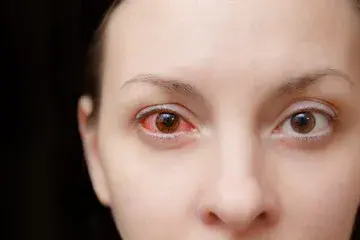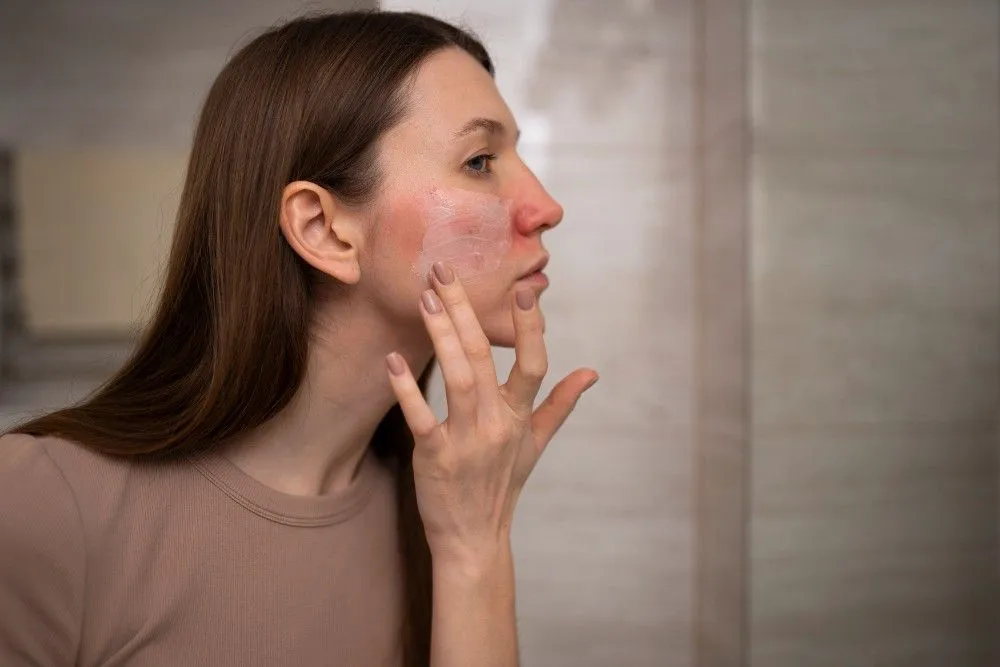Eye flu, or conjunctivitis, is when your eyes get red and itchy. It's like a little infection in your eyes. You can get it if you touch something with germs on it and then touch your eyes.
However, the good news is it usually goes away on its own. But it's also contagious, which means it can spread to others. So, washing your hands, avoiding touching your eyes, and not sharing things like towels when you have them are important.
Here in this blog, you can learn all detailed information on Eye flu, including its causes, symptoms, and possible treatments.
What is Eye Flu?
The medical term for eye flu or pink eye is conjunctivitis. It refers to an inflammation of the thin layer of clear tissue known as conjunctiva, which covers the white of the eye and lines the inside of an eyelid.
 Also Read: 15 Troublesome Common Eye Diseases
Also Read: 15 Troublesome Common Eye Diseases
What are the Causes of Eye Flu?
Eye flu can occur due to more than one reason. These include:
- Viruses (Infective conjunctivitis)
- Bacteria like Chlamydia or Gonorrhoea (Infective conjunctivitis)
- Irritant substances like dirt, shampoo, swimming pool chlorine, smoke (Irritant conjunctivitis)
- Allergens like pollen, dust, contact lenses (Allergic conjunctivitis)
Bacterial and viral conjunctivitis is highly contagious but not dangerous. However, in newborns, eye flu should be promptly shown to a doctor since it can damage vision.
What are the common Signs and Symptoms of Eye Flu?
Different symptoms of eye flu can manifest depending on what caused the inflammation. These include:
- Redness of the white of the eye and inner eyelid
- Increased tears
- Itchiness in eyes
- Blurred vision or burning eyes
- Thick, yellow discharge that forms over the eyelashes
- Sensitivity to light
Read Also: Eye Sight Problem: Eye Glasses or Surgery?
Which Specialist should be Consulted in Case of Signs and Symptoms?
People experiencing symptoms of eye flu can visit an ophthalmologist (eye specialist).
Read about: CABG Recovery Exercises
What are the Screening Tests and Investigations done to Confirm or Rule out the Disorder?
Eye flu is diagnosed through the following:
- Physical exam by the doctor
- Laboratory analysis of eye secretions (in recurrent cases of eye flu or if corneas are suspected to be affected)
What are the Eye Flu Treatment Available for Management of the Disorder?
Treatment varies with the type of infection:
1. Bacterial Conjunctivitis The doctor prescribes antibiotic eye drops that treat the infection within a week. Sometimes, an antibiotic eye ointment is prescribed for children, as it is easier to administer than an eye drop.
2. Viral Conjunctivitis Viral eye flu does not have any treatment and the infection needs to run its own course for two to three weeks. It generally spreads to the other eye too but starts to clear on its own later.
3. Allergic Conjunctivitis The doctor prescribes eye drops that contain antihistamines, mast cell stabilisers or decongestants and steroids to control inflammation.
Also Read: Ulnar Styloid - Common Wrist Fracture here.
Call +91-8010-994-994 and talk to Credi Medical Experts for FREE. Get assistance in choosing the right ophthalmologist, compare treatment cost from various hospitals and get support in managing other hospital processes.
Frequently Asked Questions
What are the Known Complications in the Management of the Disorder?
Eye flu can sometimes cause corneal inflammation that affects vision. Early diagnosis of eye flu and treatment is essential in reducing the risk of corneal involvement.
What Precautions or Steps are Necessary to Stay Healthy and Happy During the Treatment?
Stickiness in the eyelids can be cleared using cotton and water. It is important to wash hands regularly and avoid sharing towels and pillows till the infection clears up. Patients must not wear contact lenses till the infection is treated completely.
Is there any Risk to other Family Members of having the Disorder?
Though most symptoms clear out in three to four days, conjunctivitis can be contagious for a week or more in children.
How can the Disorder be Prevented from Happening or Recurring?
Good hygiene is crucial to restrict the spread of the disease. Patients must take care of the following: Avoid touching eyes with hands Avoid sharing towels and pillows and other personal items Wash hands often

Reviewed by







